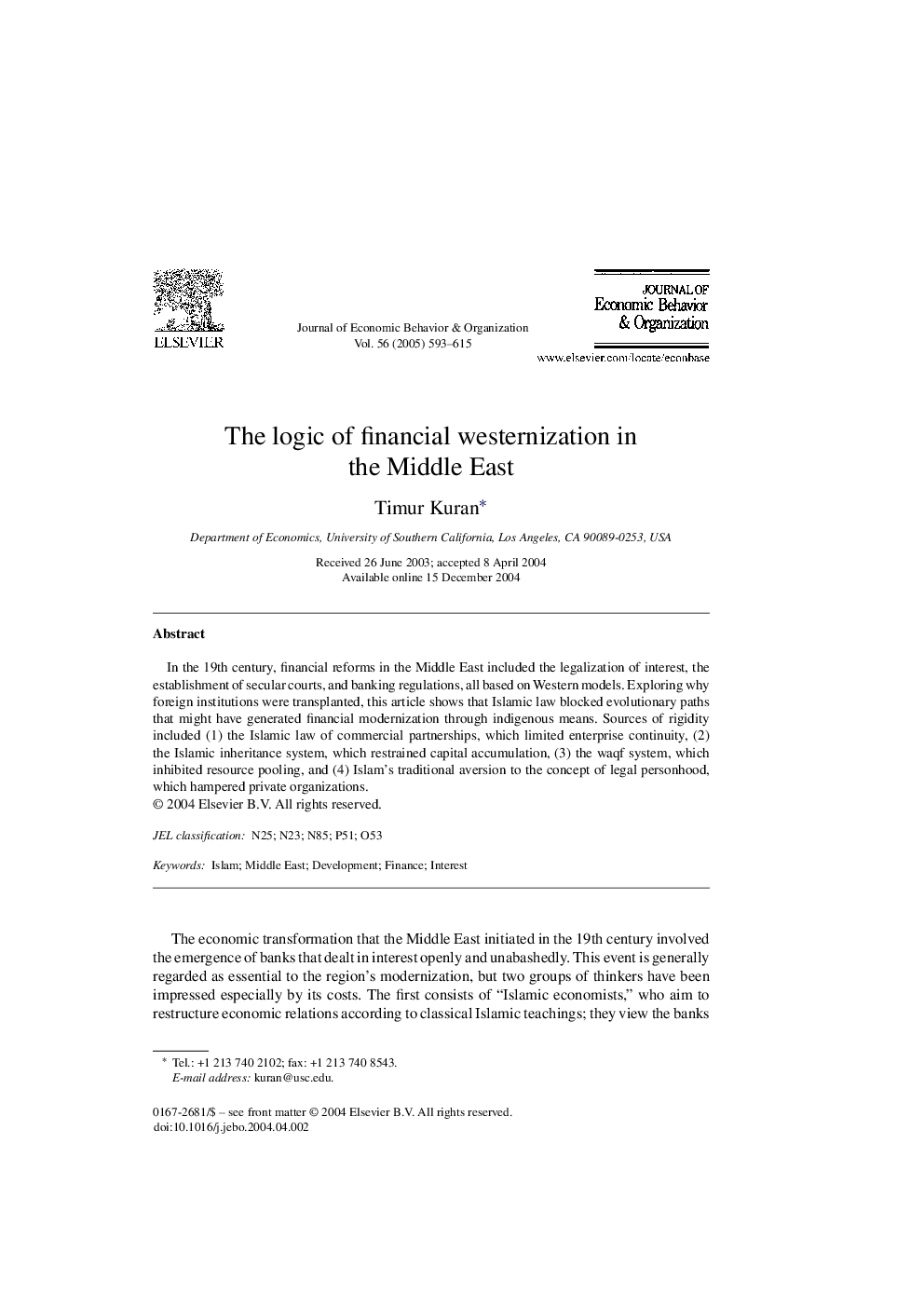| Article ID | Journal | Published Year | Pages | File Type |
|---|---|---|---|---|
| 10437833 | Journal of Economic Behavior & Organization | 2005 | 23 Pages |
Abstract
In the 19th century, financial reforms in the Middle East included the legalization of interest, the establishment of secular courts, and banking regulations, all based on Western models. Exploring why foreign institutions were transplanted, this article shows that Islamic law blocked evolutionary paths that might have generated financial modernization through indigenous means. Sources of rigidity included (1) the Islamic law of commercial partnerships, which limited enterprise continuity, (2) the Islamic inheritance system, which restrained capital accumulation, (3) the waqf system, which inhibited resource pooling, and (4) Islam's traditional aversion to the concept of legal personhood, which hampered private organizations.
Related Topics
Social Sciences and Humanities
Economics, Econometrics and Finance
Economics and Econometrics
Authors
Timur Kuran,
